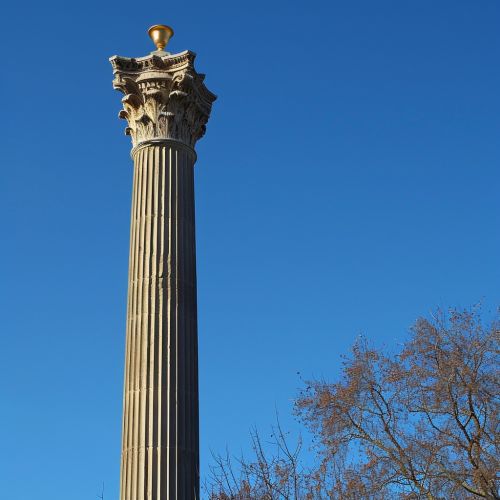Monument to the Great Fire of London
History
The Monument to the Great Fire of London, more commonly known simply as the Monument, is a Doric column in the City of London, near the northern end of London Bridge, that commemorates the Great Fire of London which occurred in 1666. The monument stands at the junction of Monument Street and Fish Street Hill, approximately 202 feet (62 m) in height – the exact distance between it and the site in Pudding Lane where the fire began.


The Great Fire of London was a major conflagration that swept through the central parts of London from Sunday, 2 September to Thursday, 6 September 1666. The fire gutted the medieval City of London inside the old Roman city wall. It threatened, but did not reach, the aristocratic district of Westminster, Charles II's Palace of Whitehall, and most of the suburban slums. It consumed 13,200 houses, 87 parish churches, St Paul's Cathedral, and most of the buildings of the City authorities. It is estimated to have destroyed the homes of 70,000 of the City's 80,000 inhabitants.
Design and Construction
The Monument comprises a fluted Doric column built of Portland stone topped with a gilded urn of fire, and was designed by Christopher Wren and Robert Hooke. Its height marks its distance from the site of the shop of Thomas Farynor, the king's baker, where the Great Fire began.
The top of the Monument is reached by a narrow winding staircase of 311 steps. A cage was added in the mid-19th century at the top of the Monument to prevent people jumping off, after six people had committed suicide from the structure between 1788 and 1842.
Inscriptions
Inscriptions on the north side of the Monument, which were composed by Dr John Ogilby, record the destruction of the City; assert the City's resurrection from the ashes and the rebuilding of the City to be the work of King Charles II; and attribute the fire to the sin of gluttony.
Legacy and Cultural Significance
The Monument, specifically its balcony, has been featured in various forms of media and popular culture. It was climbed in a 2008 episode of BBC TV's Top Gear. It also features in the video game Assassin's Creed Syndicate, in the 2001 film Bridget Jones's Diary, and in the Sherlock Holmes short story "The Adventure of the Six Napoleons".
